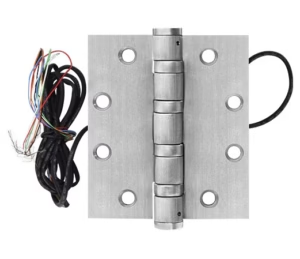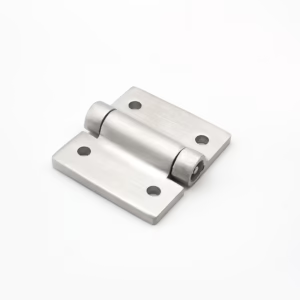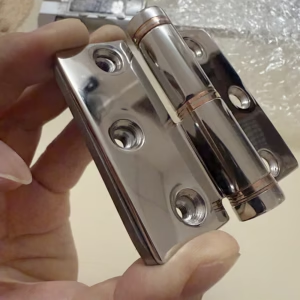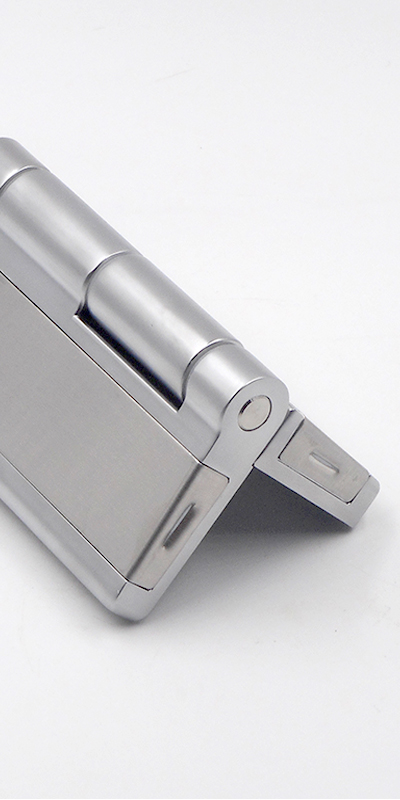Understanding hinge radius is critical for industrial hinge selection, ensuring a proper mortise fit and a clean mechanical interface.
Hinge radius refers to the curvature of a hinge’s corners. The most common types are 1/4″ and 5/8″. Choosing the correct radius ensures precise mortising, secure installation, and seamless integration into sheet metal enclosures or equipment doors.
Choosing between 1/4″ and 5/8″ hinge radius can directly impact the fit, function, and appearance of industrial equipment doors.

What Is Hinge Radius and Why Does It Matter in Industrial Equipment?
In industrial hardware, hinge radius determines the geometry of the hinge corner and affects mortise compatibility, especially in precision-engineered enclosures. Hinge radius defines the rounded edge of a hinge’s corner. It ensures compatibility with mortised cutouts and maintains structural alignment in industrial installations.
In technical manufacturing, hinge radius directly influences whether a hinge will sit flush when installed in sheet metal or equipment doors. If the radius does not match the cutout radius, the hinge will not seat properly, leading to instability or the need for corrective machining. Square hinges have no radius (0″), while rounded hinges usually have a 1/4″ or 5/8″ radius. These two standards dominate the industrial landscape due to their compatibility with common mortising tools and jigs.
For example, in a climate-controlled test chamber, where precision and sealing are key, the hinge radius must match exactly with CNC-cut mortises. In contrast, general equipment enclosures can tolerate looser tolerances, often opting for 5/8″ radius hinges due to easier installation. Choosing the correct hinge radius becomes even more essential when sourcing large quantities or replacing existing hardware in the field. At IHINGES, we support OEMs with radius-specific technical drawings and CAD files for friction hinges in industrial applications.
| Hinge Radius | Corner Shape | Ideal Use Case |
|---|---|---|
| 0″ | Perfectly Square | Custom-cut industrial applications |
| 1/4″ | Slightly Rounded | Precision sheet metal components |
| 5/8″ | Deeply Rounded | Fast production industrial assemblies |
1/4″ vs 5/8″ Radius Hinges: Key Differences and Use Cases
The 1/4″ and 5/8″ hinge radius options are not interchangeable in precision manufacturing setups. Here’s how they differ in function and application. 1/4″ radius hinges have sharper corners, offering a modern look and tighter fit; 5/8″ radius hinges are rounder, easier to machine, and better for mass production setups.
1/4″ radius hinges provide a sharper, squarer edge. They’re ideal for technical applications where the equipment housing requires exact alignment, such as Electrical Panel Hinges in control cabinets or test chambers. These hinges require CNC-precise mortising and offer a high-end finish.
In contrast, 5/8″ radius hinges feature a broader, more rounded edge. They’re preferred in high-volume manufacturing environments, where speed and simplicity outweigh micro-precision. Applications include walk-in refrigeration units or general-purpose machinery doors, where hand routers are used to create mortise cutouts.
Choosing the right radius depends on production methods and product design. For instance, a Heavy Duty Continuous Hinge used on a tall access door may perform equally well with either radius, provided the cutout matches. However, improper radius selection can cause installation delays or misalignment over time.
| Feature | 1/4″ Radius | 5/8″ Radius |
|---|---|---|
| Appearance | Sharp, square-like | Soft, rounded corners |
| Mortising Fit | Tighter, CNC precision | Looser, hand-router friendly |
| Common Use | Precision equipment | General enclosures |
| Compatible Tools | CNC Machines | Manual routers |
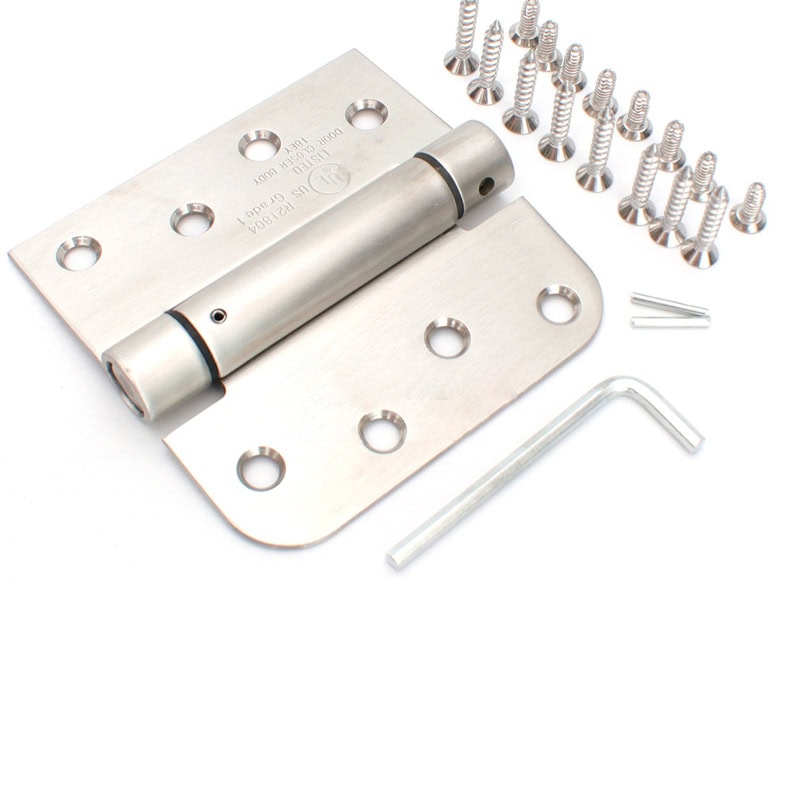
How to Measure Hinge Radius Accurately for Industrial Sourcing
Proper measurement of hinge radius avoids mismatches during bulk purchasing or prototyping in industrial applications. To measure hinge radius, align the corner of the hinge leaf with a radius template or compare it to a coin: a dime for 1/4″, a quarter for 5/8″.
For manufacturers or engineers sourcing industrial hinges globally, ensuring correct hinge specs is critical. A hinge with the wrong radius can delay assembly, cause mechanical stress, or be incompatible with automated production lines.
To measure:
-
Place the hinge on a printed radius guide or corner template.
-
Use coins as a quick reference: a dime matches a 1/4″ radius, and a quarter matches a 5/8″ radius.
-
For large orders, request a 3D drawing or CAD file from your supplier with precise radius specs.
When sourcing from platforms like Alibaba or dealing with overseas suppliers, always confirm hinge radius before confirming production. At IHINGES, we provide pre-verified drawings with radius specifications for all product categories, including Wide-throw Hinges and adjustable torque stainless steel hinge types.
| Radius Size | Coin Reference | Measuring Tool | Suitable Use Case |
|---|---|---|---|
| 1/4″ | Dime | Template or caliper | Test chambers, panel boxes |
| 5/8″ | Quarter | Visual comparison | Ovens, marine enclosures |
Choosing the Right Hinge Radius for Sheet Metal and Industrial Equipment
Selecting the appropriate hinge radius improves assembly line efficiency and ensures the mechanical fit of your equipment. Choose 1/4″ radius for precision-fit designs; opt for 5/8″ radius in high-volume manufacturing where speed and ease of installation matter more.
In high-specification industrial projects, such as aerospace, medical chambers, or defense systems, 1/4″ radius is typically preferred. It ensures tight alignment and clean mechanical joints with minimal tolerances. On the other hand, manufacturers of commercial refrigeration units or outdoor enclosures often favor 5/8″ radius hinges due to tooling compatibility and speed.
Buyers sourcing components like Heavy Duty Detachable Barrel Hinges or heavy-duty long hinges must account for the radius when replacing legacy systems. A mismatch in radius can lead to unstable door alignment or aesthetic inconsistencies in industrial cabinets or exterior panels.
At IHINGES, we advise customers to provide sample drawings or physical samples when sourcing in bulk. Our engineering support team helps clients worldwide replace industrial door hinges with exact radius-matching parts, reducing error margins and improving turnaround times.
| Application Type | Recommended Radius | Hinge Type Example |
|---|---|---|
| Sheet metal enclosures | 1/4″ | Electrical panel hinges |
| Marine equipment & trailers | 5/8″ | 316 stainless marine friction hinges |
| High-volume cold storage | 5/8″ | Heavy duty flush hinges |
| Aerospace-grade cabinets | 1/4″ | Invisible hinges with tight tolerances |
Conclusion
Understanding hinge radius helps ensure perfect hinge fit and installation in industrial projects. Choose the right radius for your equipment and production process.

